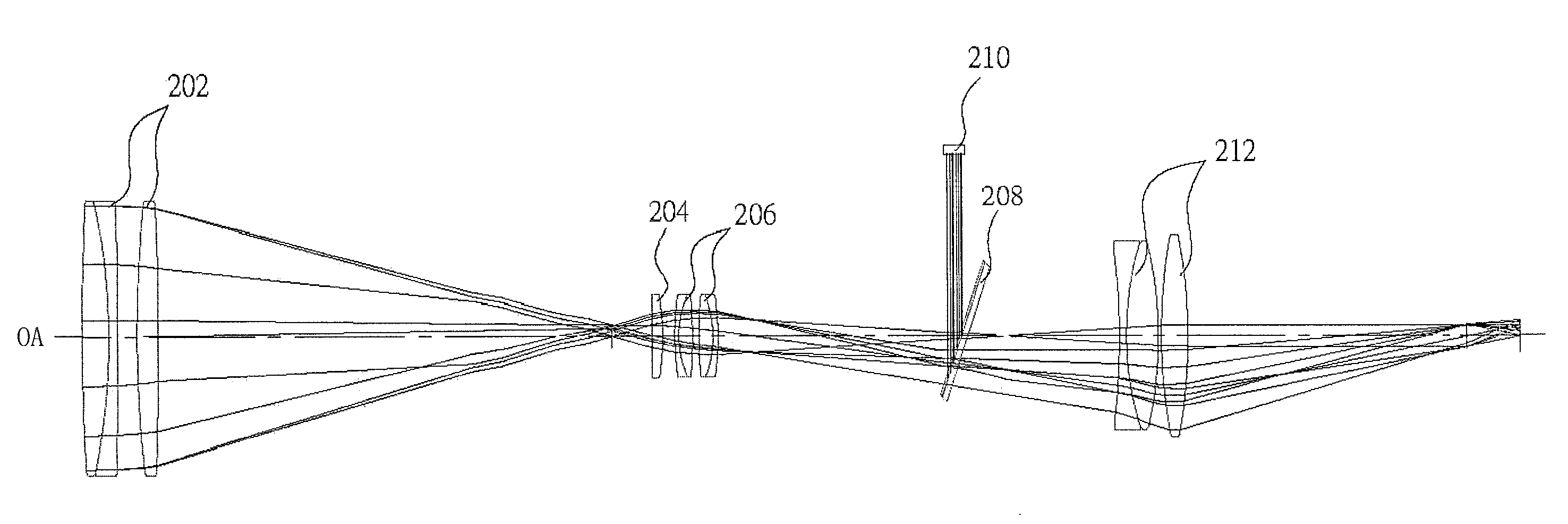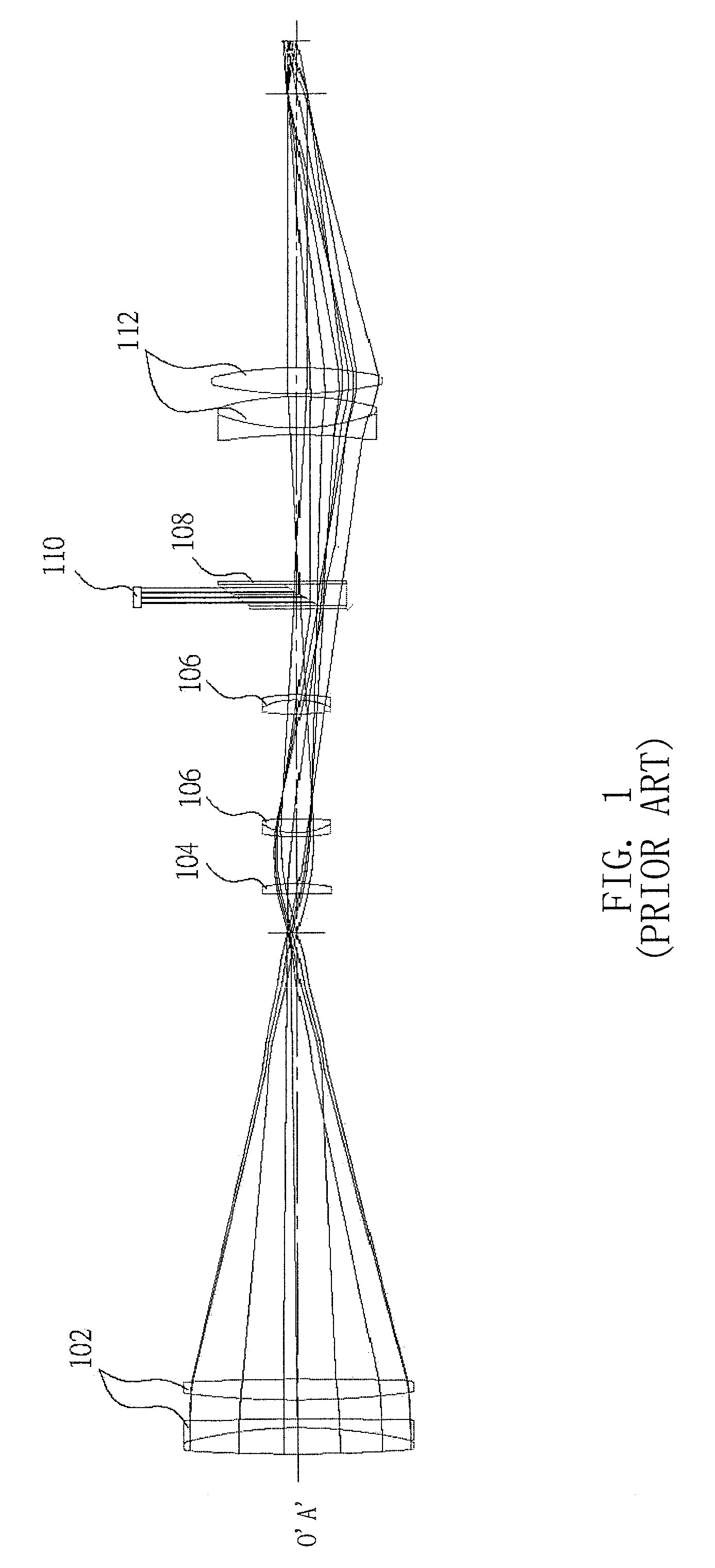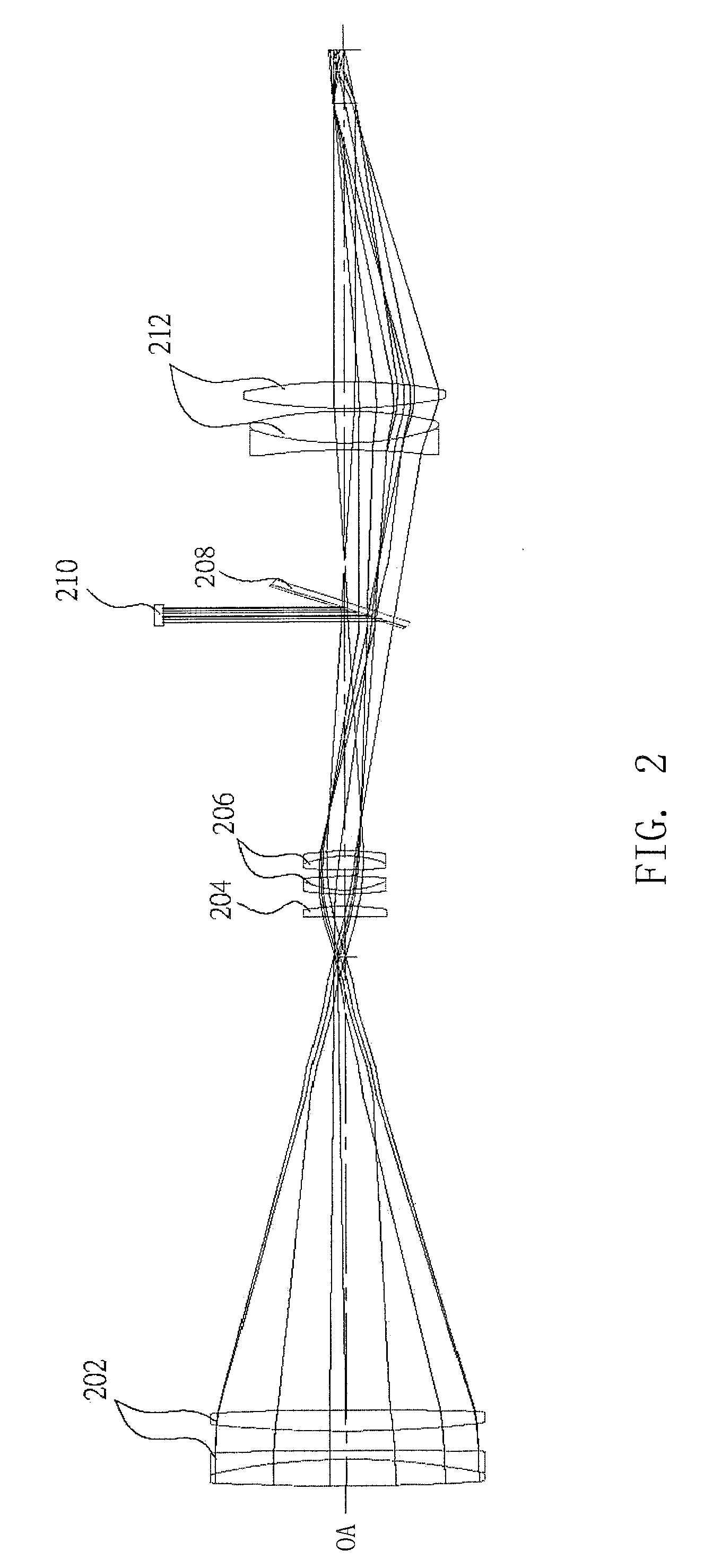Digital telescopic sight
a digital telescopic and sight technology, applied in the field of digital telescopic sight, can solve the problems of increasing the weight of the refracting prism 108, high cost, and heavy weight, and achieve the effect of reducing the weight and manufacturing cost of the present digital telescopic sight and increasing the range of applicability
- Summary
- Abstract
- Description
- Claims
- Application Information
AI Technical Summary
Benefits of technology
Problems solved by technology
Method used
Image
Examples
Embodiment Construction
[0013]FIG. 2 is a schematic view illustrating the component configuration of a digital telescopic sight in accordance with the present invention. As shown in FIG. 2, the present digital telescopic sight includes an objective lens group 202, a light semi-reflecting mirror 208 and an image sensor 210. The objective lens group 202, the light collecting lens 204, the erecting lens group 206, the semi-reflecting mirror 208 and the eyepiece lens group 212 are sequentially arranged along the direction in which exterior light rays enter the digital telescopic sight or along the primary optical axis OA of the digital telescopic sight. In detail, the objective lens group 202 is positioned at an object end or the frontmost end of the digital telescopic sight. The light collecting lens 204 is positioned on one side of the objective lens group 202. The erecting lens group 206 is positioned on one side of the light collecting lens group 204 opposite to the objective lens group 202. The semi-refle...
PUM
 Login to View More
Login to View More Abstract
Description
Claims
Application Information
 Login to View More
Login to View More - R&D
- Intellectual Property
- Life Sciences
- Materials
- Tech Scout
- Unparalleled Data Quality
- Higher Quality Content
- 60% Fewer Hallucinations
Browse by: Latest US Patents, China's latest patents, Technical Efficacy Thesaurus, Application Domain, Technology Topic, Popular Technical Reports.
© 2025 PatSnap. All rights reserved.Legal|Privacy policy|Modern Slavery Act Transparency Statement|Sitemap|About US| Contact US: help@patsnap.com



